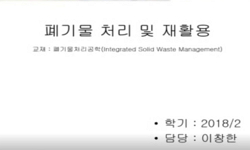This study investigated physical properties and combustion gas characteristics for 8 types of wood pellets (4 domestic and 4 imported products) distributed in the domestic market. Results showed that most pellet types were first-grade pellets in the...
http://chineseinput.net/에서 pinyin(병음)방식으로 중국어를 변환할 수 있습니다.
변환된 중국어를 복사하여 사용하시면 됩니다.
- 中文 을 입력하시려면 zhongwen을 입력하시고 space를누르시면됩니다.
- 北京 을 입력하시려면 beijing을 입력하시고 space를 누르시면 됩니다.
https://www.riss.kr/link?id=A100202870
- 저자
- 발행기관
- 학술지명
- 권호사항
-
발행연도
2014
-
작성언어
English
- 주제어
-
KDC
472.52642
-
등재정보
KCI등재
-
자료형태
학술저널
-
수록면
362-369(8쪽)
- 제공처
-
0
상세조회 -
0
다운로드
부가정보
다국어 초록 (Multilingual Abstract)
This study investigated physical properties and combustion gas characteristics for 8 types of wood pellets (4 domestic and 4 imported products) distributed in the domestic market. Results showed that most pellet types were first-grade pellets in the wood pellet quality standards in Korea with the exception of 3 pellet types from K company (second-grade in mechanical durability), G company (off-grade in nitrogen content) and P company (second-grade in ash percentage). Mixed pellets which contained more lignin and sap content were higher in mechanical durability (%) than that of white pellets. From the combustion gas analysis results, NOx emitted from all pellets combustion was at acceptable levels for national emission standard of the Clean Air Conservation Act except for pellets from G company. In addition, CO levels from all types of wood pellets were acceptable except for pellets from D company and domestic pellets were higher CO levels than imported pellets. These results indicate the higher CO levels in domestic pellets due to the usage of forest thinning materials including logging debris which usually had the high content of bark.
목차 (Table of Contents)
- Abstract
- Introduction
- Materials and Methods
- Experimental materials
- Experimental methods
- Abstract
- Introduction
- Materials and Methods
- Experimental materials
- Experimental methods
- Results and Discussion
- Physical characteristics of wood pellets
- Conclusion
- Acknowledgements
- References
동일학술지(권/호) 다른 논문
-
- 강원대학교 산림과학연구소
- Abrar Juhar Mohammed
- 2014
- KCI등재
-
- 강원대학교 산림과학연구소
- Kee Hwa Bae
- 2014
- KCI등재
-
- 강원대학교 산림과학연구소
- Bukola Amoo Oyebade
- 2014
- KCI등재
-
Distribution and Diversity of Beetle Fauna (Coleoptera:Carabidae) on Korean Mountain Jangsan
- 강원대학교 산림과학연구소
- Chong Kyu Lee
- 2014
- KCI등재






 eArticle
eArticle




